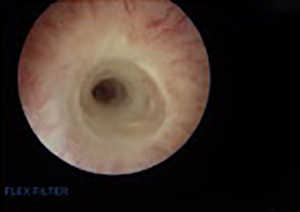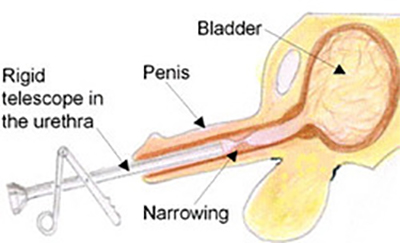

A Direct Vision Internal Urethrotomy, also called a DVIU, is a procedure for the treatment of urethral strictures. Urethral strictures are a narrowing of the urethral that can cause difficulty with urination and changes with ejaculation. While women can develop urethral stricture, DVIU is only appropriate for treatment of male urethral strictures.
If you have a urethral stricture (scar tissue narrowing the urethra) that has not been previously treated, you can consider a DVIU as a treatment option. This procedure is straightforward and frequently effective. DVIUs can be helped with injection of local medications that slow or prevent scar recurrence.

In general, preparation for a DVIU will involve the following steps:
A DVIU is a surgical procedure that requires some amount of anesthesia. Your anesthesiologist will discuss with you how they will make for comfortable during the procedure. In general, the procedure occurs as follows:
Patients will usually have a urinary catheter for 2-3 days following this procedure. The purpose of the catheter is to allow urine to pass around the area of the scar. It is common to see a small amount of blood in your urine. The surgery does not cause very much discomfort.
After removal of the catheter, you should have immediate improvement of the urine stream. This is usually greatest in the period immediately after the surgery and may change to a slightly slower stream over time.
Your doctor will monitor your urine stream over time, usually several times in the first 6 months then less frequently if your stream remains stable.
Urinary tract infection and blood in the urine are the most common short terms risks of this procedure. Long term, the risk of stricture recurrence is around 30-40%. This is a high rate, but the simplicity of the surgery makes it appropriate for men to initially try. Men who have stricture recurrence will likely need a more advanced procedure, called a urethroplasty.